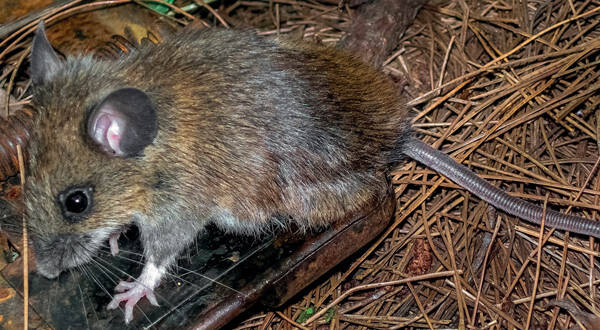Apodemus peninsulae
IUCN
LCBasic Information
Scientific classification
- name:Apodemus peninsulae
- Scientific Name:Apodemus peninsulae,Wood mouse, mountain mouse, Korean wood mouse
- Outline:Rodents
- Family:Rodentia Muridae Apodemus
Vital signs
- length:70-120 mm
- Weight:50g or more
- lifetime:
Feature
A common rodent in forest areas, it has a slender body and resembles the black-striped field mouse, but without the black stripe in the middle of its back.
Distribution and Habitat
In China, it is distributed in Qinghai, Sichuan, Gansu, Shaanxi, Shanxi, Ningxia, Tibet, northern Yunnan, Hebei, Inner Mongolia and the three northeastern provinces. Abroad, it is distributed in the Korean Peninsula and Siberia, Russia.
The large forest mouse lives in forest areas, shrubs, forest clearings and farmlands at the edge of forests. In contrast to the small forest mouse, it prefers drier forests. From the vertical distribution, the large forest mouse accounts for 45.5% of the species in forests at an altitude of 300-600 meters. If the altitude is greater or lower than this value, its number will be significantly reduced. In oak forests, they often build nests in rock crevices, and in mixed forests, they often build nests in tree roots, fallen trees and dead branches and leaves.
Appearance
Individuals are similar to Chinese field mice, but the tail is shorter than the body length, and only a few have the same tail length as the body length. The back is generally darker, brown-black, with a dark gray base, yellow-brown or with black tips on the upper part, and mixed with a lot of completely black guard hairs, so the overall color is brown-black. The abdomen and the inside of the limbs are grayish white, with a light gray base. The dorsal and ventral hair color boundaries are obvious. The ears are covered with dense yellow-brown short hairs. The tail is two-colored, brown on the upper side and white on the lower side. The back of the front feet is white, and the back of the hind feet is mostly white, and some individuals are gray.
Details
The Great Wood Mouse belongs to the Murinae subfamily, and its species-level classification status is stable, with more subspecies differentiation and greater divergence. It belongs to the group with a wider distribution, higher altitude (southern China), and northern latitude in the genus Apodemus. The three provinces in Northeast China are the main distribution areas.
The Great Wood Mouse is mainly active at night, but can also be seen during the day. The average activity distance of males is 76.3m, and that of females is 61.3m. It has the habit of seasonal migration, that is, it migrates from the forest to the site after May in spring, and then migrates back to the forest from the site in September in autumn.

The forest mouse likes to eat nutritious plant seeds and fruits. It also eats insects, but rarely eats the green parts of plants. It likes to eat pine nuts, hazelnuts, prunes, and rose fruits. It has the ability to dig seeds when foraging, and can bury the uneaten food with dead branches, fallen leaves, and soil, etc., leaving it for the next foraging.
The nests vary according to the environment. In oak forests, they often build nests in rock crevices, and in mixed forests, they often build nests in tree roots, fallen trees, and dead branches and leaves. They use dead grass and dead leaves to make nests. When the ground is covered with snow in winter, they move under the snow layer, leaving holes on the ground, and there are crisscrossing tunnels between the ground and the snow layer. The male's nest area is larger than that of the female, and there is a core area with frequent activities in the nest area.
Reproduction can begin in April, and the peak season is in June. Each litter has 4 to 9 pups, and generally can reproduce 2 to 3 generations per year. The population fluctuates significantly, generally from April to June the population increases, from July to September the population peaks, and then starts to decline in October.
The forest mouse likes to eat seeds and fruits of broad-leaved trees, which affects the natural regeneration of forest areas and is seriously harmful to direct seeding of forest trees. In addition, it is a host for the spread of pathogens of many diseases such as forest encephalitis and Japanese encephalitis.








